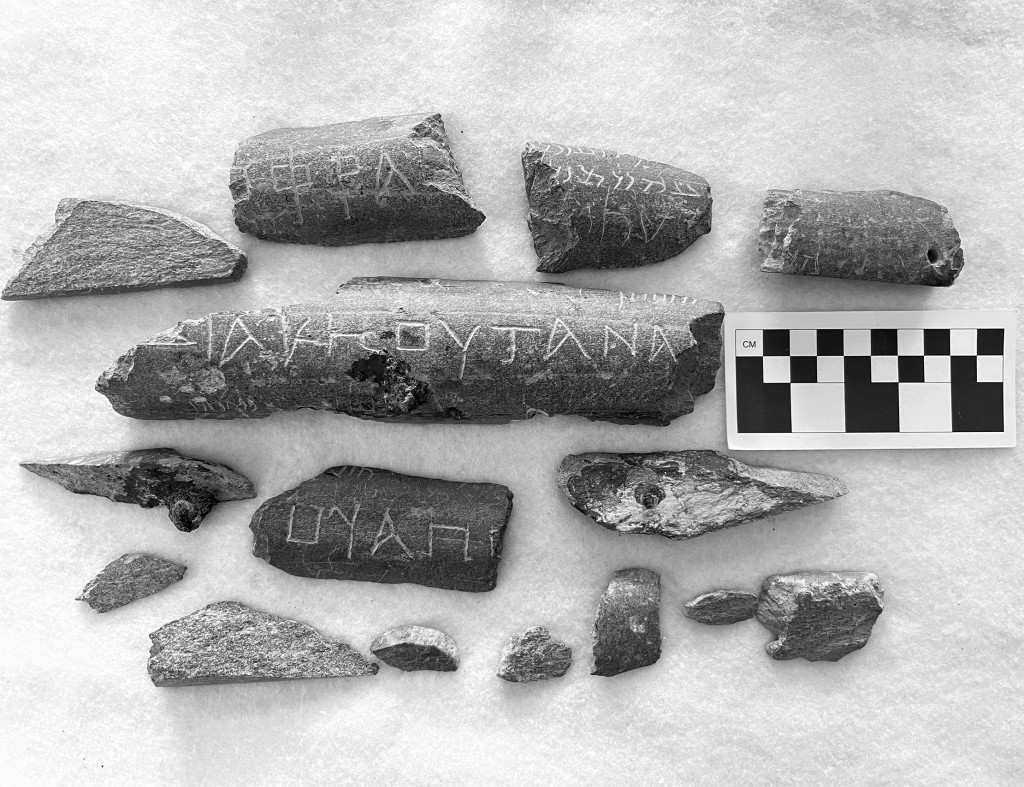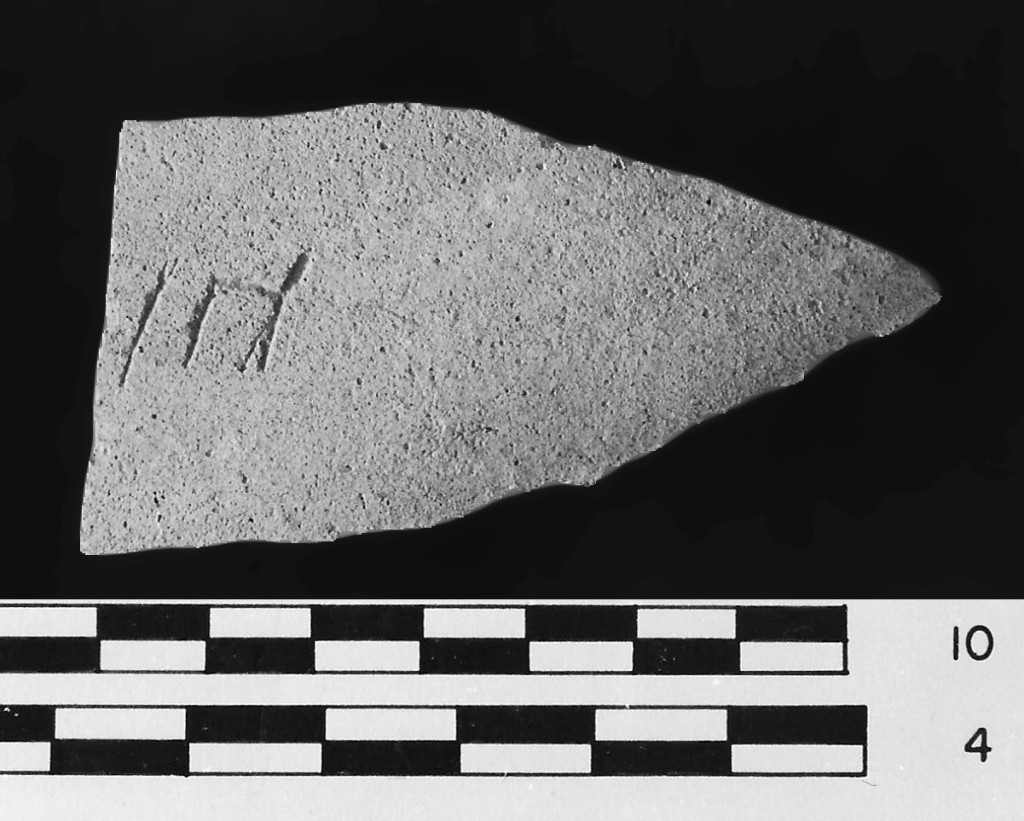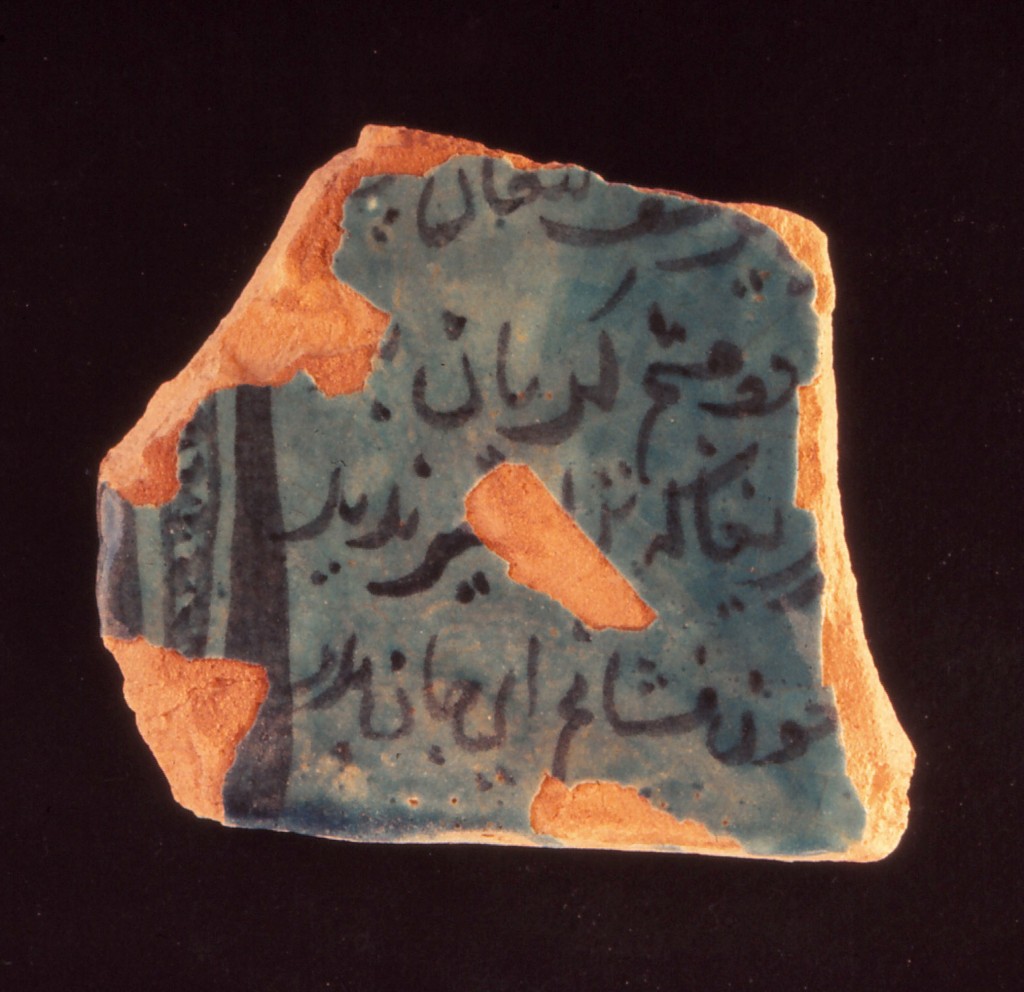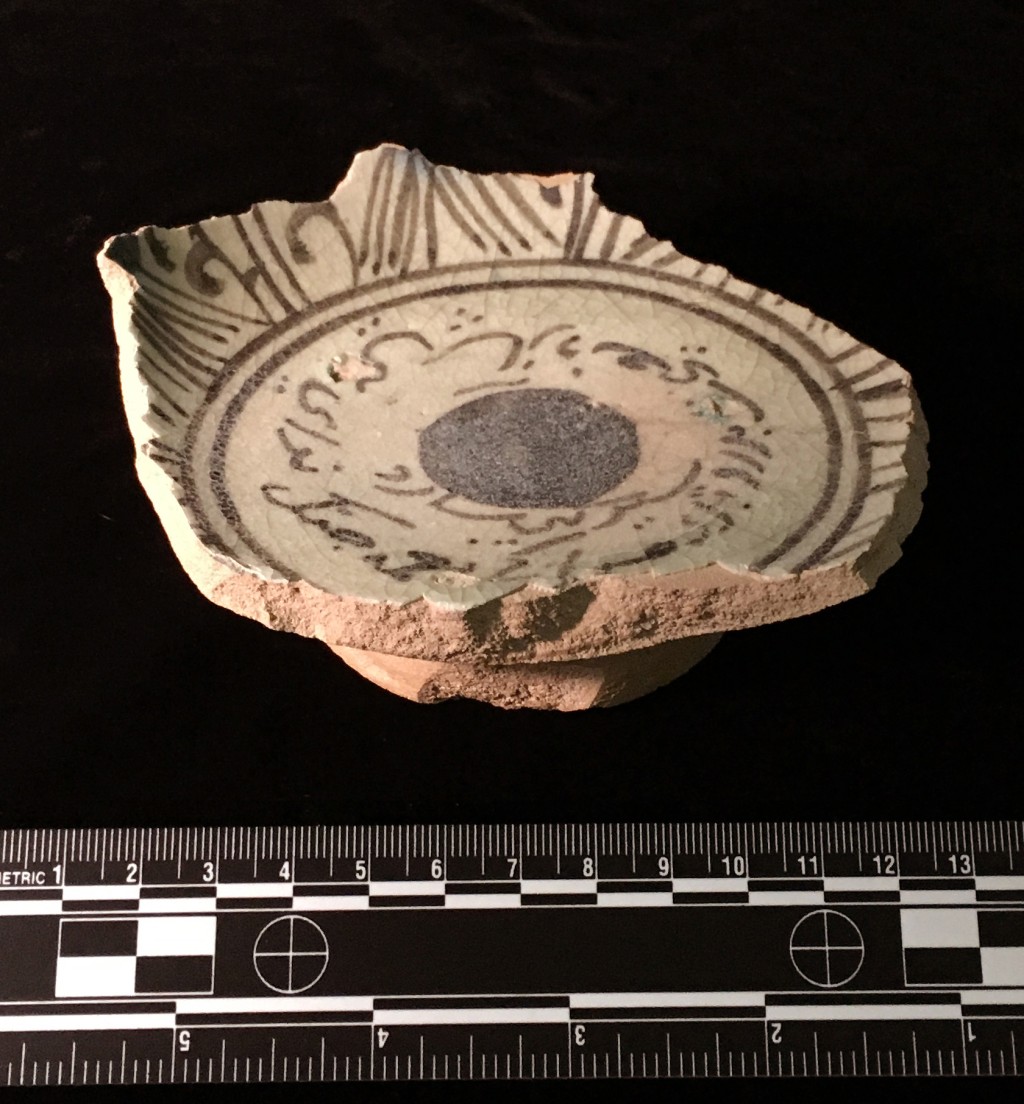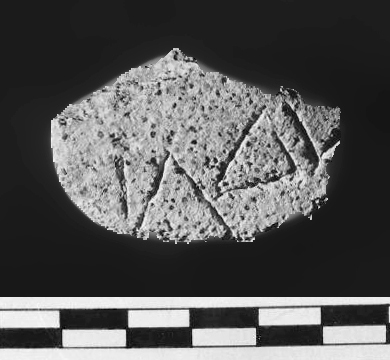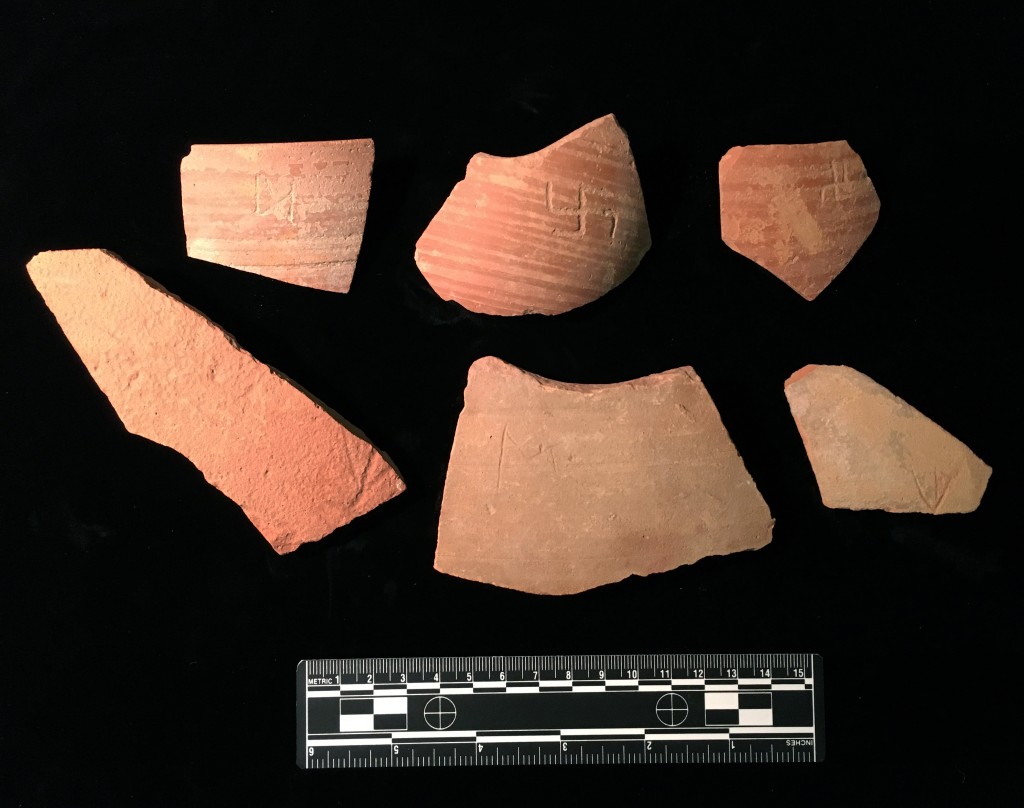Inscriptions
Inscribed material from Sistan was limited, as would be expected of the finds from a surface survey. The most notable material was the bilingual Greek-Aramaic inscription from the excavation of the well at Khwaja Ali Sehyaka/Sehyak, published in Volume 1 of our report by Lauren Morris, Rachel Mairs, and Michael Zellman-Rohrer. Several other pre-Islamic ostraca were found at different sites and will be published in Volume 2. Islamic inscriptions were found in several forms, as decoration on glazed ceramics, as glazed mortuary tiles from the Timurid period, as graffiti on the walls of sites, and as stamped ceramics and bricks. These will be published in Volume 2 by Viola Allegranzi. One puzzling sherd from the Bronze Age site of Dam has four characters that may or may not be a decorative motif or an inscription in an early Iranian script. At Khwaja Ali Sehyaka/Sehyak, and several other sites, were a host of tamga, inscribed marks on pottery, dating to Parthian times. These will also be published in Volume 2 of the report.
